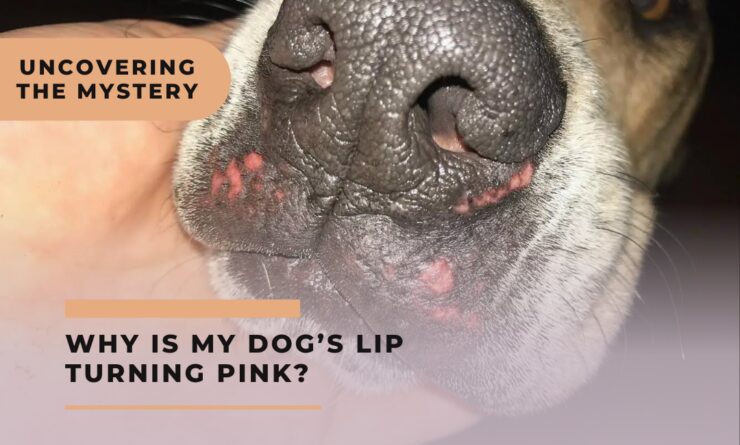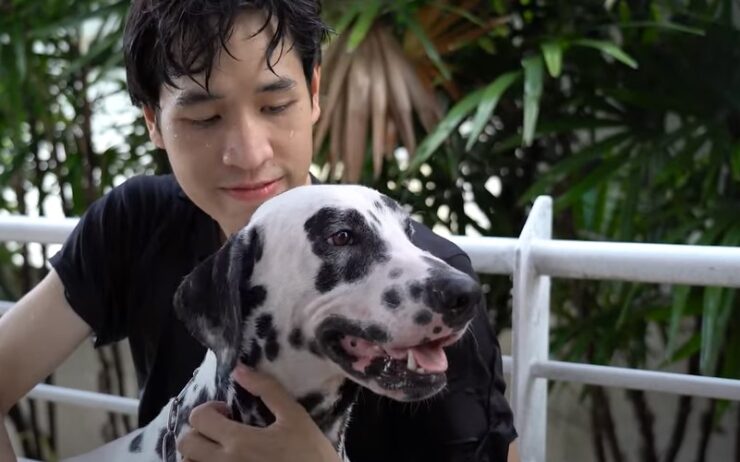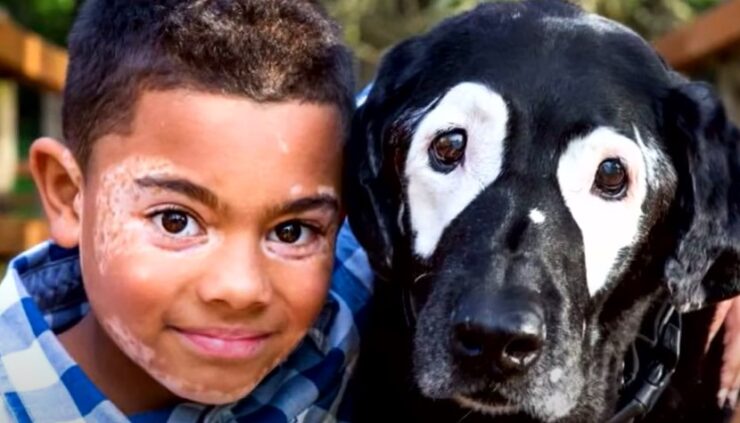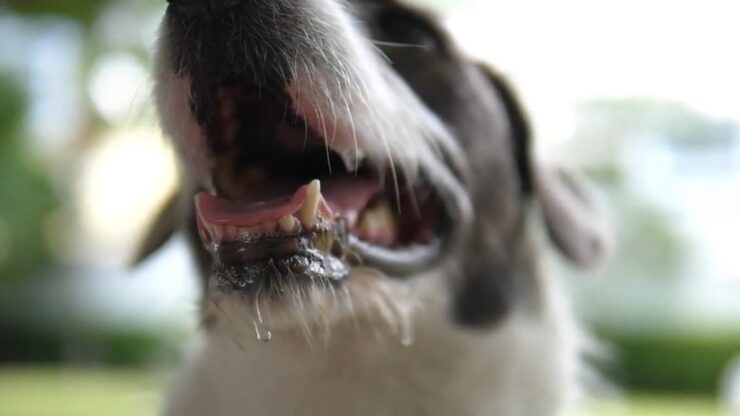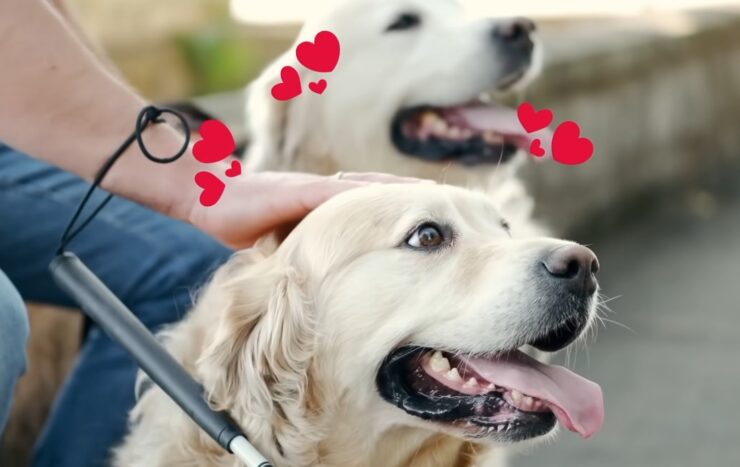Are your dog’s lips turning pink? As a pet owner, your furry companion’s health should be of utmost importance. Changes in physical appearance and behavior can signal underlying issues.
Pink discoloration on a dog’s lip might have different causes. It could be as simple as a seasonal change, which is not a cause for concern. This change may alter your dog’s appearance but will not impact their health.
However, if other symptoms accompany the pink discoloration, it could be a serious issue that requires a visit to the vet.
Let’s examine the top causes of your dog’s lip turning pink. We will then explore if the condition is harmful and the actions you can take as a pet owner.
Discoloration Primary Causes
Minor changes in a dog’s coat and skin are normal and can affect dogs of any breed, age, or gender. For instance, the skin and coat might become lighter, darker, or lose pigmentation for various reasons.
Here are the top 8 causes of pink discoloration on a dog’s lip:
1. Infections
Bacterial or fungal infections are the leading causes that could turn your dog’s lip pink. Dogs are naturally curious, sniffing around objects and chewing on things in their environment, which could expose them to infections.
If you observe swelling or lesions along with the change in lip color, it is best to visit the vet.
Mucocutaneous Pyoderma is a skin condition that might result from an infection. The condition primarily affects the margins and the area around the lips. The vet will run culture tests to identify the type of bacteria invading the skin and provide antibiotics.
You might also have to apply a topical antibiotic for complete healing. In severe cases, oral antibiotics could be given. To prevent further occurrence, you will have to keep the area around the dog’s lip clean.
2. Allergies
Did you change your dog’s diet? Introduced new food, perhaps? Are you using a new cleaning agent for their blanket?
Allergies are one of the common causes that can turn your dog’s lip pink. They are often accompanied by symptoms like swelling, redness, or rashes.
The allergy can cause skin irritation and make your dog uncomfortable. They would end up rubbing or scratching the inflamed area, worsening the condition.
Common food allergens in dogs include dairy products, chicken, wheat gluten, lamb, and beef. In addition, common environmental allergens include dust, pollen, dust mites, and flea saliva. If your dog is allergic and it comes into contact with these allergens, you will notice the above symptoms.
Consult the vet for appropriate medication and dosage information.
3. Trauma
Dogs explore their surroundings using their nose and mouth, which makes them prone to injuries.
Your dog’s lips could get scratched or bruised while playing, or it could get injured due to rubbing or aggressive chewing. Such trauma could turn their lips pink.
When this happens, ensure to take care of the wound. It can turn into skin infections if left untreated. Also, monitor your dog’s behavior, so they do not indulge in excessive rubbing or licking, as it can slow down the healing process.
The vet could provide an antiseptic topical if the wound is deep. And once the wound heals, your dog’s lip should regain its color. The pink trauma scars are normal, though; they will not impact your pet’s health.
4. Vitiligo
Vitiligo is a skin condition that causes your dog’s skin or hair to lose its natural pigmentation, leading to white patches on their face and body. They will have a changed appearance, but your dog will not be in any discomfort.
Melanocytes are cells that produce melanin in the skin, which gives color to the skin. Vitiligo develops when these cells are destroyed.
Vitiligo could be hereditary or caused by autoimmune diseases, toxin exposure, or neurological disease, in which the body attacks and destroys melanocytes.
The skin condition starts early in dogs, with initial changes appearing on their nose, lips, and around the eyes. The affected area turns white or pink as the melanocytes die.
Breeds such as Rottweilers, Golden Retrievers, Siberian Huskies, Dachshunds, German Shepherds, and Old English Sheepdogs have a higher risk of developing Vitiligo.
5. Excessive Tear or Saliva
Porphyrins are iron-containing molecules produced when the body breaks down red blood cells. They are typically removed from your dog’s body through their poop but can also be found in their urine, tears, and saliva.
Porphyrins can stain your dog’s coat, turning it a reddish-brown color, and can also turn the lips pink. This staining is more visible on dogs with white or light-colored coats.
Excessive tears or saliva production could be a symptom of an underlying issue, such as a severe eye infection, blocked tear ducts, or dental problems. Once you address the actual cause and keep the area clean, your dog’s lip should return to its natural color.
6. Discoid Lupus
Discoid lupus erythematosus (DLE) is an autoimmune disease that causes the immune system to attack the body. DLE results in scabbing, crusting of the skin, and loss of pigmentation in the affected area.
Dogs living in sunny climates are prone to this disease, as exposure to UV rays can trigger inflammation and worsen the condition.
Symptoms typically appear around the nose, and along with light discoloration, you may see ulcers, erosions, and lesions. The vet will perform a skin biopsy to confirm the condition. Treatment for DLE can range from topical to systemic medications.
Follow the treatment plan and keep up with vet visits to ensure your pet enjoys a better quality of life.
7. Sun Exposure
One of the simpler causes of pink discoloration on dogs’ lips is the lack of sunlight. Melanin is a natural pigment responsible for skin color and protection from the sun.
Temperature affects melanin production, which decreases in colder months. The same applies to dogs.
During winters, people and pets tend to stay indoors, reducing sun exposure. With reduced melanin production, their lips may turn pink.
If the pink lips are not accompanied by any other changes, there is no need to worry.
8. Age
As your furry friend ages, it is normal to see changes in their skin and coat color, such as losing pigmentation or lightening of their coats.
This natural aging process is not a cause for concern, and your dog’s pink lips due to age will not impact their health or routine. Ensure regular vet visits to monitor their health.
Is Pink Discoloration on Dogs Lips a Cause for Concern? There is no one-size-fits-all answer to this question, as it depends on your pet’s specific situation.
If your dog’s lips have turned pink but their mouth seems fine, they can continue their routine, and there are no other symptoms, then it is not a cause for concern. It could be a seasonal change.
Should You Be Concerned About Pink Discoloration on Your Dog’s Lips?
There is no definitive answer, as it depends on your pet’s specific condition. If pink lips are the only change and no other symptoms are present, it’s likely not a cause for concern. However, if other symptoms accompany the pink discoloration, consult your vet.
- Inflammation
- Skin lesions
- Swelling
- Erosion
- Loss of color in other parts of the body
- Behavioral changes
Monitor your pet’s health regularly and take note of any changes you observe. These details can help the vet identify the causes affecting your dog’s health.
What to Do If Your Dog’s Lips Have Turned Pink?
If the cause is a seasonal change or a skin condition like Vitiligo, understand that your dog is not experiencing pain or discomfort. It may alter their appearance, but it won’t affect their well-being.
If the pink lips result from another cause, the vet will provide a treatment plan, which may include topical treatments, ointments, antibiotics, or other oral medications. Ensure you follow the treatment plan and visit the vet for follow-ups.
Some skin conditions like DLE worsen with sun exposure, so use water-resistant sunblock when taking your dog for walks. If your dog has an autoimmune disease, regular blood tests become essential.
In most cases, with proper treatment, follow-up, and care, your dog can enjoy their normal routine.
FAQ
Can certain dog breeds be more prone to pink lips?
Yes, certain breeds like Rottweilers, Golden Retrievers, Siberian Huskies, Dachshunds, German Shepherds, and Old English Sheepdogs are more prone to developing Vitiligo, which can cause pink lips.
Can stress cause it?
While stress may not directly cause your dog’s lips to turn pink, it can weaken their immune system, making them more susceptible to infections or allergies that can cause pink lips.
Can I use human sunscreen on my dog’s lips?
It is recommended to use a pet-safe, water-resistant sunblock specifically designed for dogs. Human sunscreen may contain ingredients that are harmful to dogs if ingested.
How can I clean my dog’s lips to prevent infections?
Use a damp cloth or pet-safe wipes to gently clean the area around your dog’s lips daily. Keep the area dry and avoid using harsh chemicals that may cause irritation.
Can pink lips be a sign of a more serious health issue in dogs?
Pink lips alone may not indicate a severe health issue, but if accompanied by other symptoms like swelling, inflammation, or behavioral changes, it is essential to consult your vet for a proper diagnosis.
Can You Prevent Your Dog’s Lips from Turning Pink?
Natural factors like lack of sunlight and aging affect pigmentation in dogs, and there’s nothing you can do to avoid these changes. Vitiligo is a condition that is believed to be hereditary. These changes are acceptable and not something to worry about.
However, you can protect your dog from allergies and skin infections. Provide them with a healthy diet and understand what foods are suitable for them. Maintain good oral hygiene and keep their surroundings clean to minimize environmental allergens.
Boredom can lead to excessive chewing in dogs. Ensure they get regular exercise, mental stimulation, and playtime to keep them healthy and happy.

